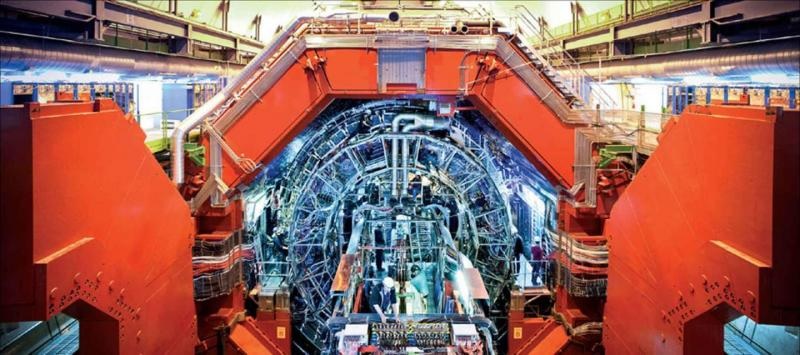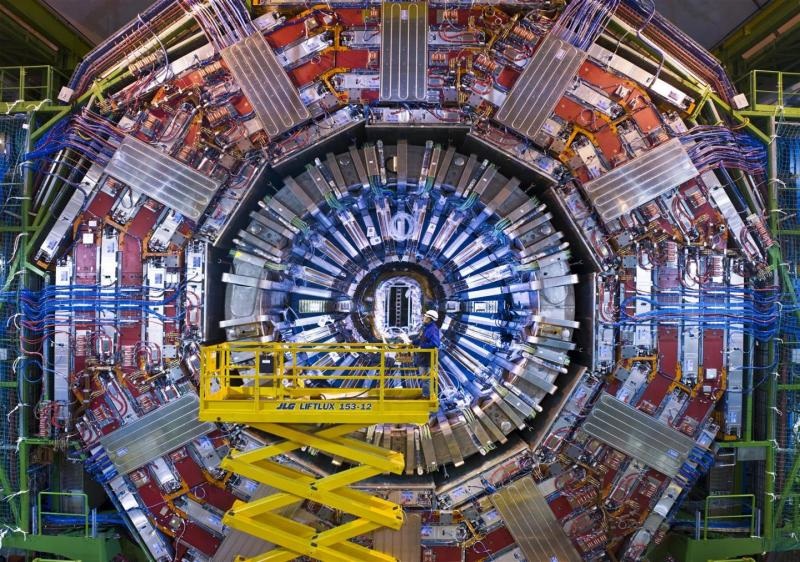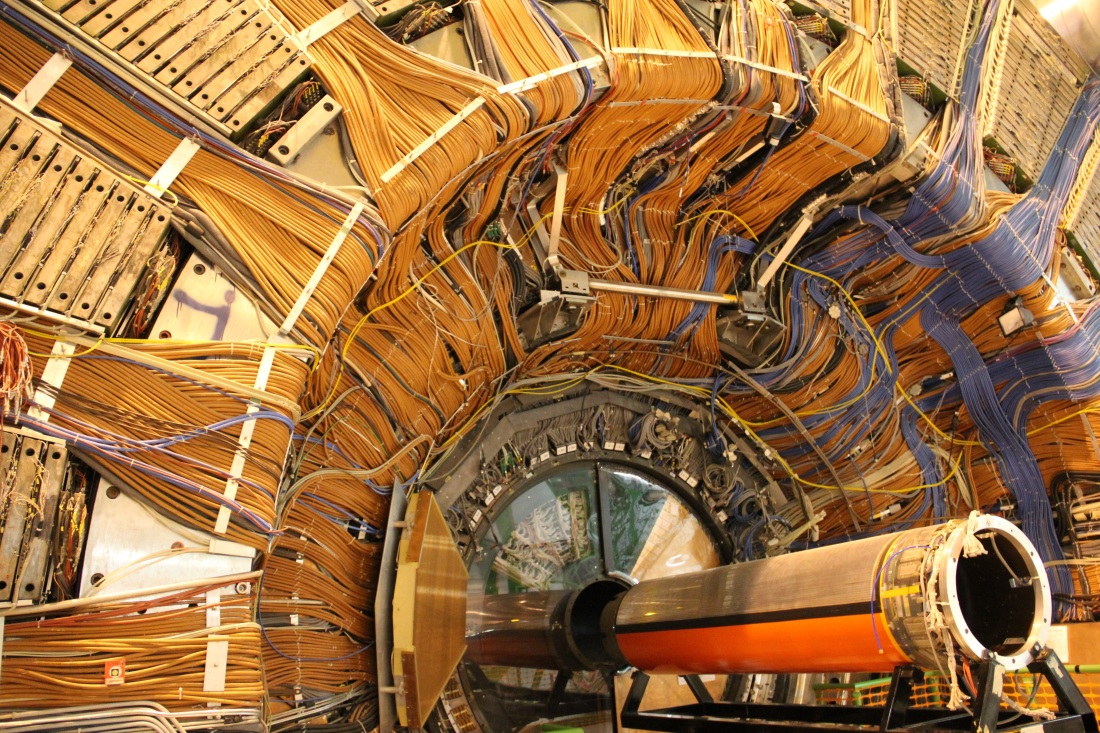8 March 2019

Newly published results from the MINOS+ experiment at Fermilab in the US cast fresh doubts on the existence of the sterile neutrino – a hypothetical fourth neutrino flavour that would constitute physics beyond the Standard Model.


Neutrino oscillations, predicted more than 60 years ago, and finally confirmed in 1998, explain the observed transmutation of neutrinos from one flavour to another as they travel. Tantalising hints of new-physics effects in short-baseline accelerator-neutrino experiments have persisted since 1995, when the Liquid Scintillator Neutrino Detector (LSND) at Los Alamos National Laboratory reported an 88±23 excess in the number of electron antineutrinos emerging from a muon–antineutrino beam. This suggested that muon antineutrinos were oscillating into electron antineutrinos along the way, but not in the way expected if there are only three neutrino flavours.
The plot thickened in 2007 when another Fermilab experiment, MiniBooNE, an 818 tonne mineral-oil Cherenkov detector located 541 m downstream from Fermilab’s Booster neutrino beamline, began to see a similar effect. The excess grew, and last November the MiniBooNE collaboration reported a 4.5σ deviation from the predicted event rate for the appearance of electron neutrinos in a muon neutrino beam. In the meantime, theoretical revisions in 2011 meant that measurements of neutrinos from nuclear reactors also show deviations suggestive of sterile-neutrino interference: the so-called “reactor anomaly”.
Tensions have been running high. The latest results from MINOS+, first reported in 2017 and recently accepted for publication in Physical Review Letters, fail to confirm the MiniBooNE signal. The MINOS+ results are also consistent with those from a comparable analysis of atmospheric neutrinos in 2016 by the IceCube detector at the South Pole. “LSND, MiniBooNE and the reactor data are fairly compatible when interpreted in terms of sterile neutrinos, but they are in stark conflict with the null results from MINOS+ and IceCube,” says theorist Joachim Kopp of CERN. “It might be possible to come up with a model that allows compatibility, but the simplest sterile neutrino models do not allow this.” In late February, the long-baseline T2K experiment in Japan joined the chorus of negative searches for the sterile neutrino, although excluding a different region of parameter space.
Whereas MiniBooNE and LSND sought to observe a second-order flavour transition (in which a muon neutrino morphs into a sterile and then electron neutrino), MINOS+ and IceCube are sensitive to a first-order muon-to-sterile transition that would reduce the expected flux of muon neutrinos. Such “disappearance” experiments are potentially more sensitive to sterile neutrinos, provided systematic errors are carefully modelled.
“The MiniBooNE observations interpreted as a pure sterile neutrino oscillation signal are incompatible with the muon-neutrino disappearance data,” says MINOS+ spokesperson Jenny Thomas of University College London. “In the event that the most likely MiniBooNE signal were due to a sterile neutrino, the signal would be unmissable in the MINOS/MINOS+ neutral-current and charged-current data sets.” Taking into account simple unitarity arguments, adds Thomas, the latest MINOS+ analysis is incompatible with the MiniBooNE result at the 2σ level and at 3σ sigma below a “mass-splitting” of 1 eV2 (see figure 1).
MINOS+ studies how muon neutrinos oscillate into other neutrino flavours as a function of distance travelled, using magnetised-iron detectors located 1 and 735 km downstream from a neutrino beam produced at Fermilab.
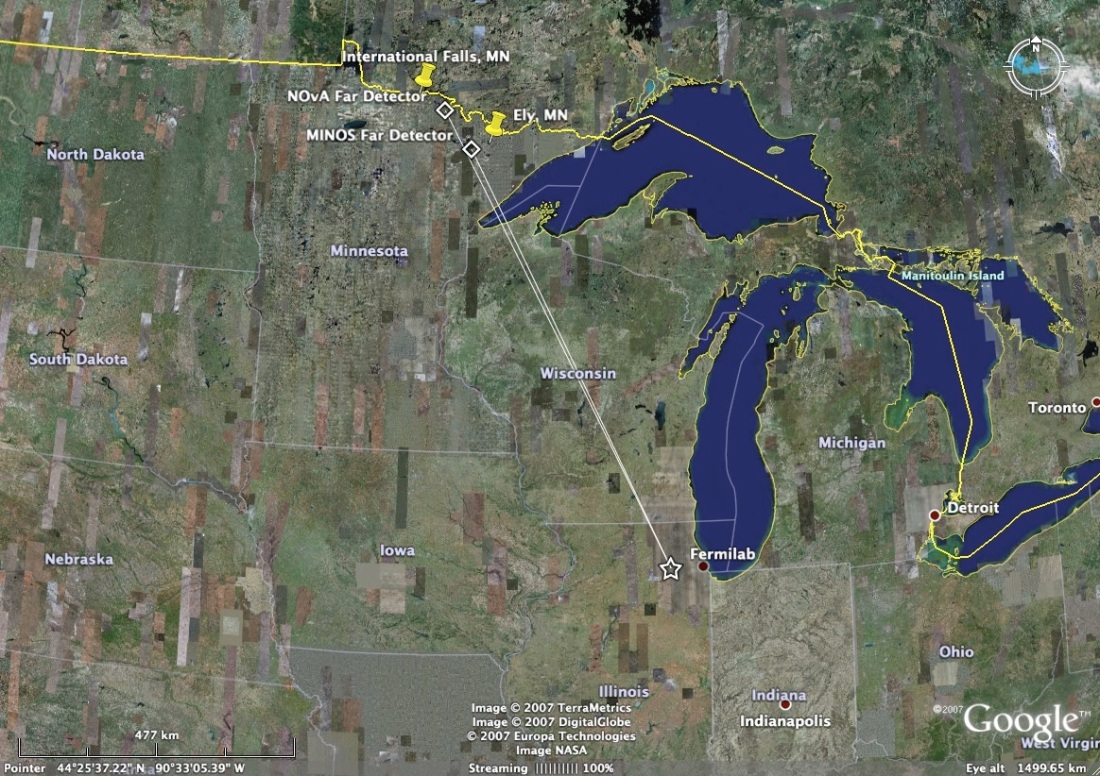
Neutrino oscillations, predicted more than 60 years ago, and finally confirmed in 1998, explain the observed transmutation of neutrinos from one flavour to another as they travel. Tantalising hints of new-physics effects in short-baseline accelerator-neutrino experiments have persisted since 1995, when the Liquid Scintillator Neutrino Detector (LSND) at Los Alamos National Laboratory reported an 88±23 excess in the number of electron antineutrinos emerging from a muon–antineutrino beam.

This suggested that muon antineutrinos were oscillating into electron antineutrinos along the way, but not in the way expected if there are only three neutrino flavours.
The plot thickened in 2007 when another Fermilab experiment, MiniBooNE, an 818 tonne mineral-oil Cherenkov detector located 541 m downstream from Fermilab’s Booster neutrino beamline, began to see a similar effect.
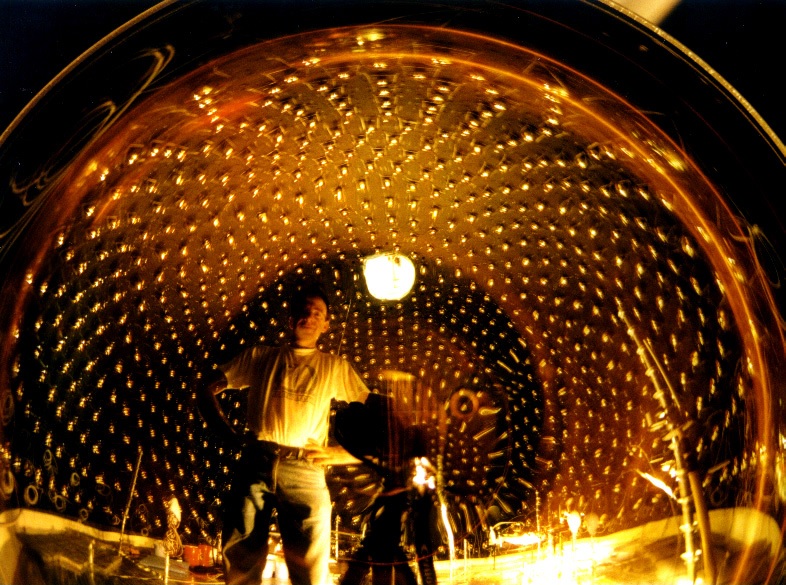
The excess grew, and last November the MiniBooNE collaboration reported a 4.5σ deviation from the predicted event rate for the appearance of electron neutrinos in a muon neutrino beam. In the meantime, theoretical revisions in 2011 meant that measurements of neutrinos from nuclear reactors also show deviations suggestive of sterile-neutrino interference: the so-called “reactor anomaly”.
Tensions have been running high. The latest results from MINOS+, first reported in 2017 and recently accepted for publication in Physical Review Letters, fail to confirm the MiniBooNE signal. The MINOS+ results are also consistent with those from a comparable analysis of atmospheric neutrinos in 2016 by the IceCube detector at the South Pole.

“LSND, MiniBooNE and the reactor data are fairly compatible when interpreted in terms of sterile neutrinos, but they are in stark conflict with the null results from MINOS+ and IceCube,” says theorist Joachim Kopp of CERN. “It might be possible to come up with a model that allows compatibility, but the simplest sterile neutrino models do not allow this.” In late February, the long-baseline T2K experiment in Japan joined the chorus of negative searches for the sterile neutrino, although excluding a different region of parameter space.
Whereas MiniBooNE and LSND sought to observe a second-order flavour transition (in which a muon neutrino morphs into a sterile and then electron neutrino), MINOS+ and IceCube are sensitive to a first-order muon-to-sterile transition that would reduce the expected flux of muon neutrinos. Such “disappearance” experiments are potentially more sensitive to sterile neutrinos, provided systematic errors are carefully modelled.
“The MiniBooNE observations interpreted as a pure sterile neutrino oscillation signal are incompatible with the muon-neutrino disappearance data,” says MINOS+ spokesperson Jenny Thomas of University College London. “In the event that the most likely MiniBooNE signal were due to a sterile neutrino, the signal would be unmissable in the MINOS/MINOS+ neutral-current and charged-current data sets.” Taking into account simple unitarity arguments, adds Thomas, the latest MINOS+ analysis is incompatible with the MiniBooNE result at the 2σ level and at 3σ sigma below a “mass-splitting” of 1 eV2 (see figure 1).

Fig. 1.
The sterile-neutrino hypothesis is also in tension with cosmological data, says theorist Silvia Pascoli of Durham University. “Sterile neutrinos with these masses and mixing angles would be copiously produced in the early universe and would make up a significant fraction of hot dark matter. This is somewhat at odds with cosmological observations.”
One possibility for the surplus electron–neutrino-like events in MiniBooNE is insufficient accuracy in the way neutrino–nucleus interactions in the detector are modelled – a challenge for neutrino-oscillation experiments generally. According to MiniBooNE collaborator Teppei Katori, one effect proposed to account for the MiniBooNE anomaly is neutral-current single-gamma production. “This rare process has many theoretical interests, both within and beyond the Standard Model, but the calculations are not yet tractable at low energies (around 1 GeV) as they are in the non-perturbative QCD region,” he says.
MINOS+ is now analysing its final dataset and working on a direct comparison with MiniBooNE to look for electron-neutrino appearance as well as the present study on muon-neutrino disappearance. Clarification could also come from other short-baseline experiments at Fermilab, in particular MicroBooNE, which has been operating since 2015, and two liquid-argon detectors ICARUS and SBND (CERN Courier June 2017 p25).




The most exciting possibility is that new physics is at play. “One viable explanation requires a new neutral-current interaction mediated by a new GeV-scale vector boson and sterile neutrinos with masses in the hundreds of MeV,” explains Pascoli. “So far this has not been excluded. And it is theoretically consistent. We have to wait and see.”
See the full article here .

five-ways-keep-your-child-safe-school-shootings
Please help promote STEM in your local schools.
THE FOUR MAJOR PROJECT COLLABORATIONS
ATLAS

ALICE
